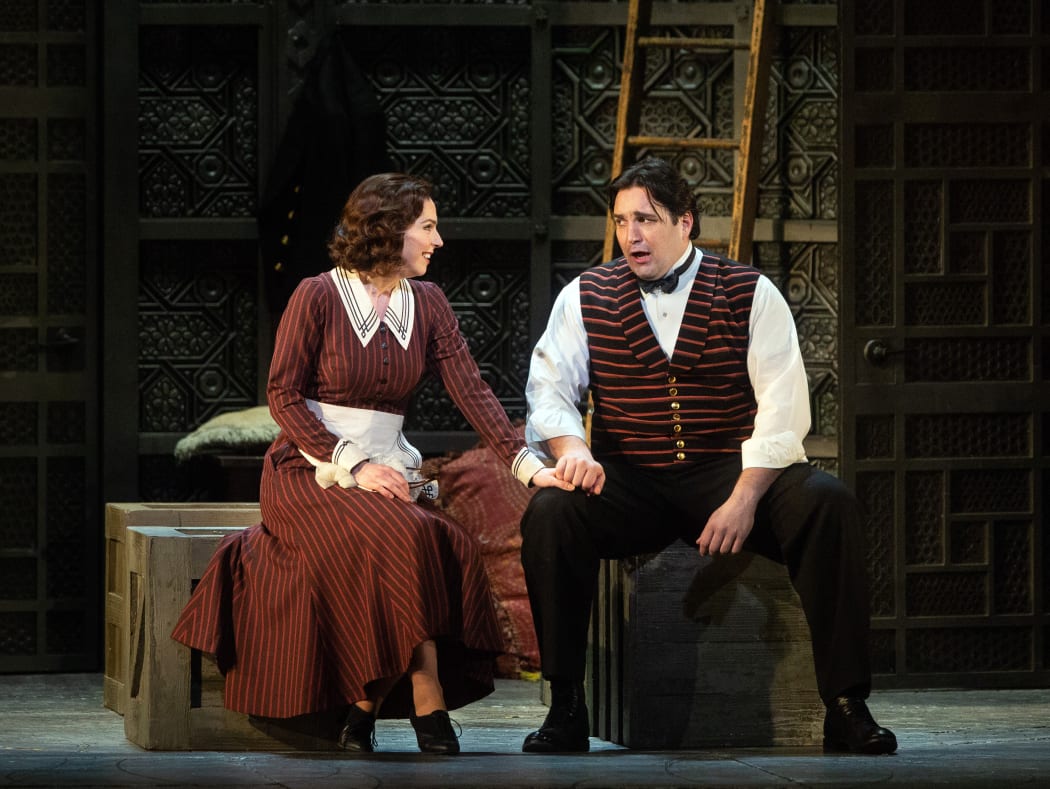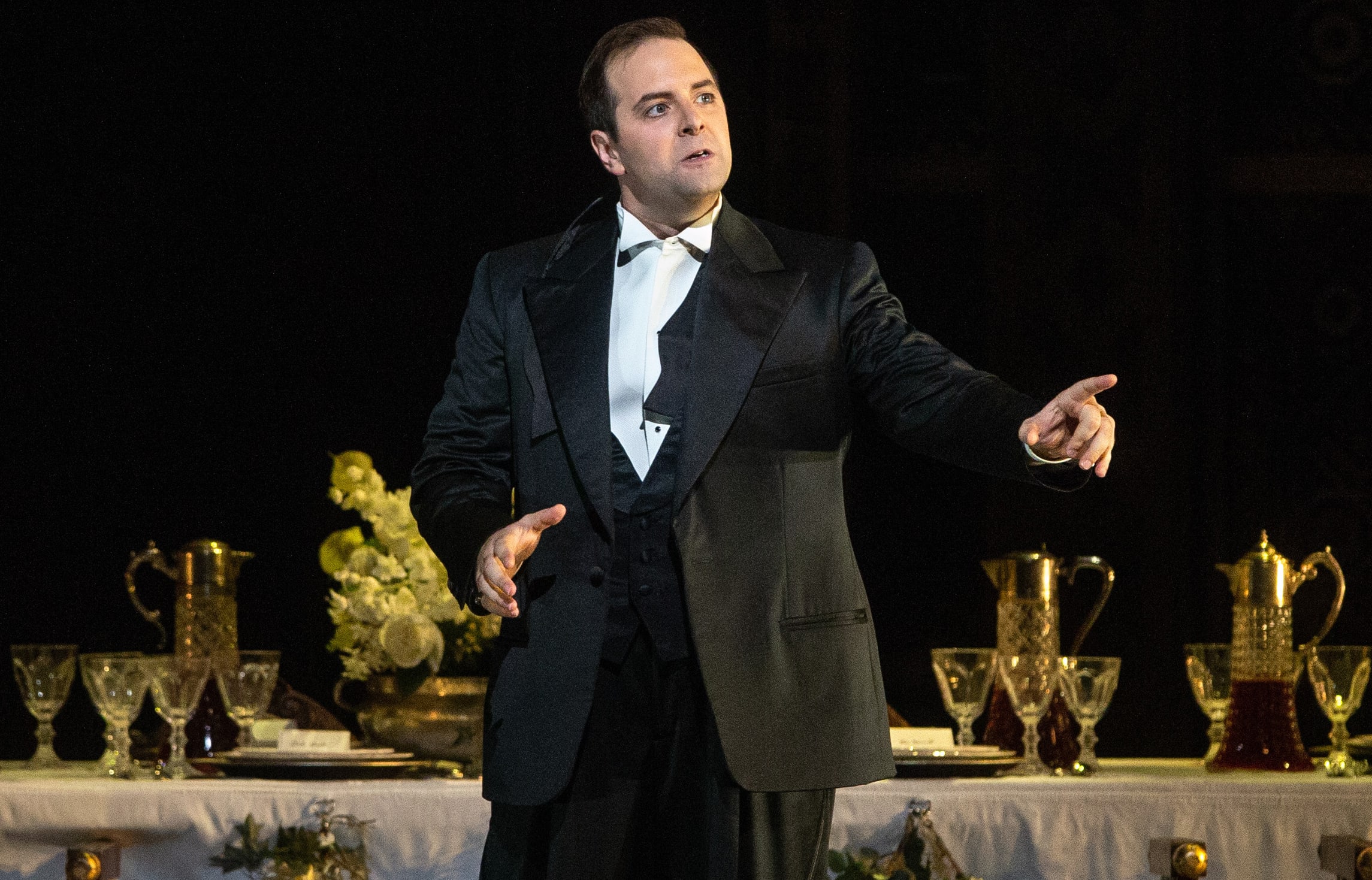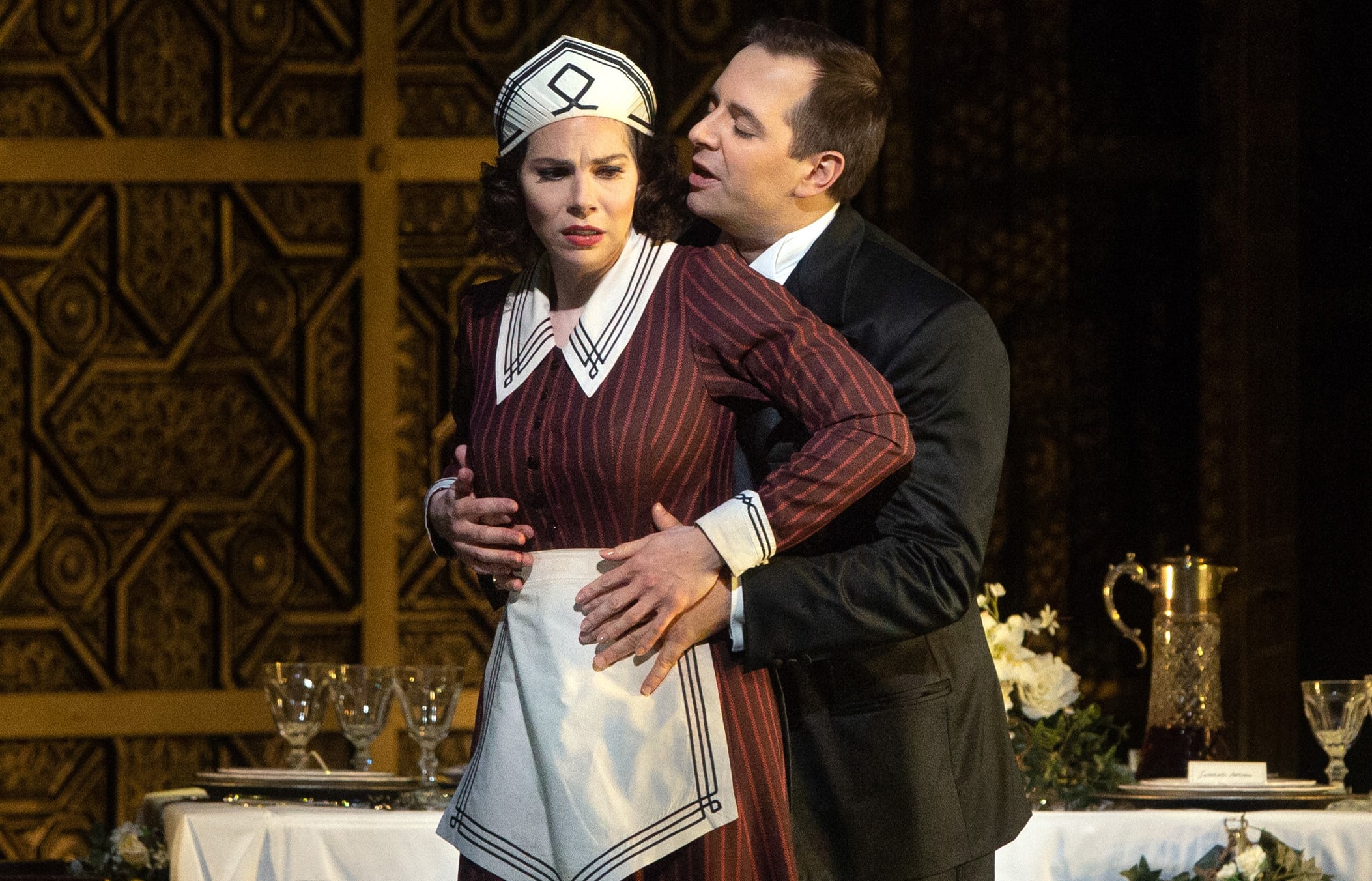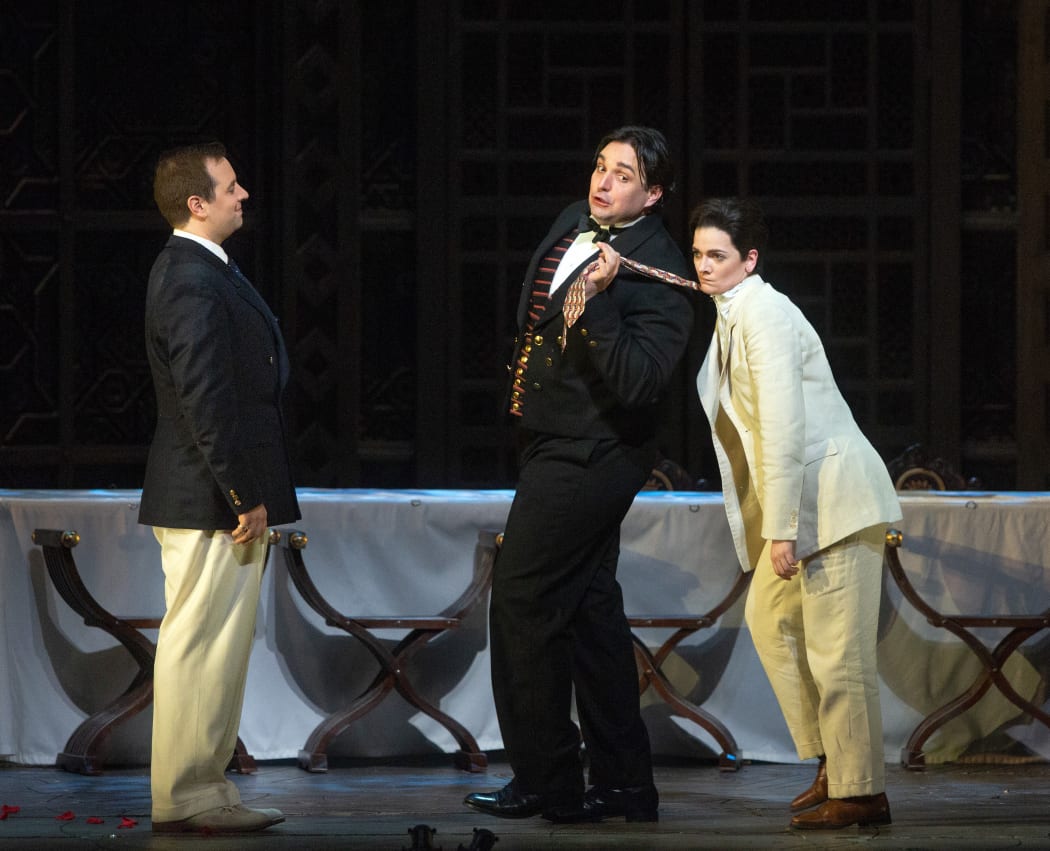
Hanna-Elisabeth Müller as Susanna and Adam Plachetka as Figaro Photo: Marty Sohl/The Metropolitan Opera
Sunday 22 March 2020 at 6pm on RNZ Concert
Metropolitan Opera Season
MOZART: The Marriage of Figaro
Cast:
Amanda Woodbury (Countess Rosina Almaviva), Hanna-Elisabeth Müller (Susanna), Marianne Crebassa (Cherubino), MaryAnn McCormick (Marcellina), Etienne Dupuis (Count Almaviva), Adam Plachetka (Figaro), Maurizio Muraro (Dr Bartolo), Maureen McKay (Barbarina), Keith Jameson (Don Basilio), Tony Stevenson (Don Curzio), Metropolitan Opera Chorus & Orchestra conducted by Cornelius Meister
Recorded in the Metropolitan Opera House, New York
Synopsis for The Marriage of Figaro
A profoundly humane comedy, Le Nozze di Figaro is a remarkable marriage of Mozart’s music at the height of his genius and one of the best librettos ever set. In adapting a play that caused a scandal with its revolutionary take on 18th-century society, librettist Lorenzo Da Ponte focused less on the original topical references and more on the timeless issues embedded in the frothy drawing-room comedy.

Etienne Dupuis as the Count Photo: Marty Sohl/The Metropolitan Opera
Seville, the setting of Figaro and its prequel, The Barber of Seville, was famous in Mozart’s time as a place filled with hot-blooded young men and exotically beautiful women sequestered behind latticed windows, or “jalousies” (which gave us our English word “jealousy”). The city was the birthplace of the Don Juan legends, which Mozart and Da Ponte would mine for their subsequent masterpiece, Don Giovanni. This Met production of Le Nozze di Figaro places the action in the 1930s.

Hanna-Elisabeth Müller as Susanna and Etienne Dupuis as the Count Photo: Marty Sohl/The Metropolitan Opera
Figaro’s amazing score mirrors the complex world it depicts. The first impression is one of tremendous beauty and elegance. Dig a little deeper, and you’ll find all the underlying pain and deception, with a constant tension between the social classes and the sexes, where each character has something to gain and something to hide. Standout solo numbers include the Countess’s two arias, Cherubino’s 'Voi, che sapete', Susanna’s 'Deh, vieni, non tardar' and Figaro’s arias, the angry Act IV diatribe against womankind, 'Aprite un po’ quegli occhi' and Act I’s 'Non più andrai' in which not even the most buoyant and memorable melody in the world can quite hide the character’s sarcasm.

Etienne Dupuis as the Count, Adam Plachetka as Figaro, and Marianne Crebassa as Cherubino Photo: Marty Sohl/The Metropolitan Opera

